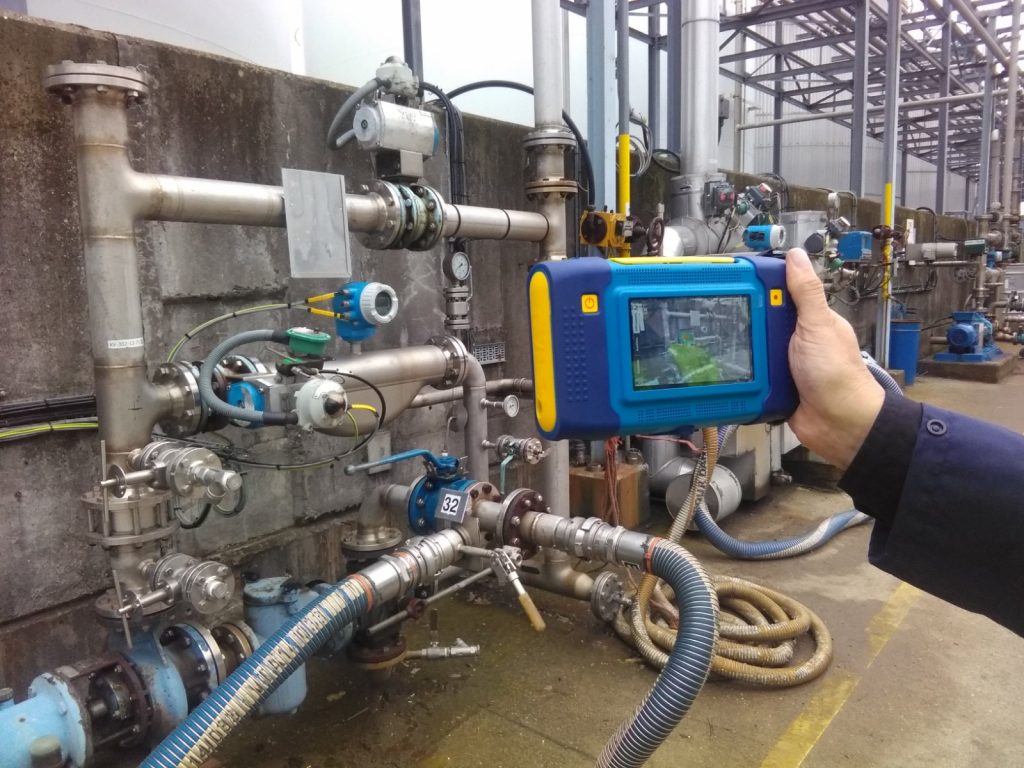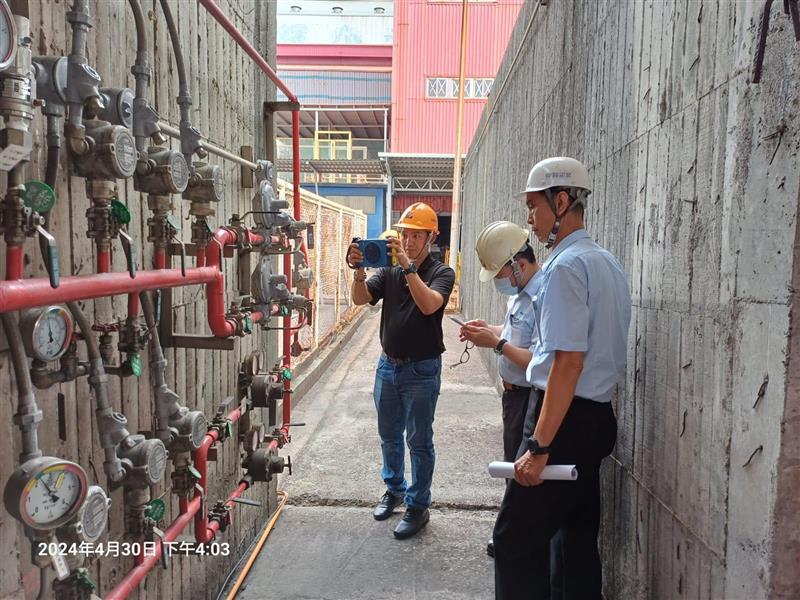Stop Compressed Air Waste
Leaks erode profits and sustainability.
- Overview
- FAQ
Compressed air is one of the most expensive utilities in industrial facilities—and also one of the most wasted. Leaks can account for up to 30% of total compressed air use, driving up energy costs and putting unnecessary strain on equipment. Ultrasound technology makes it fast and easy to pinpoint even the smallest leaks, helping you recover lost energy, lower operating costs, and extend asset life.
Compressed air leaks can waste 35–45% of total output in poorly maintained systems. Since compressed air is up to 8 times more expensive than electricity, this waste can cost tens of thousands—or even millions—annually. Beyond energy loss, leaks strain compressors, shorten equipment life, and increase maintenance costs.
Leaks tend to show up in predictable places. The most common culprits include quick-connect fittings, couplings, hoses, filter/regulator/lubricator (FRL) units, and pipe joints. Other frequent leak points include valves, drains, and pneumatic tools. Over time, vibration, corrosion, and poor connections make these components especially prone to failure. Regular inspections with ultrasound help you zero in on these hotspots quickly—before small leaks become major issues.
Ultrasound detects high-frequency sounds caused by turbulence when pressurized air escapes through a small opening. This happens as air moves from high to low pressure, creating a distinct ultrasonic signal. Technicians can quickly locate leaks—even in noisy environments—without interrupting operations.

Stop Compressed Air Waste
Leaks erode profits and sustainability.

- Overview
- FAQ
Compressed air is one of the most expensive utilities in industrial facilities—and also one of the most wasted. Leaks can account for up to 30% of total compressed air use, driving up energy costs and putting unnecessary strain on equipment. Ultrasound technology makes it fast and easy to pinpoint even the smallest leaks, helping you recover lost energy, lower operating costs, and extend asset life.
How much energy can be wasted by compressed air leaks?
Compressed air leaks can waste 35–45% of total output in poorly maintained systems. Since compressed air is up to 8 times more expensive than electricity, this waste can cost tens of thousands—or even millions—annually. Beyond energy loss, leaks strain compressors, shorten equipment life, and increase maintenance costs.
Where are compressed air leaks most likely to occur?
Leaks tend to show up in predictable places. The most common culprits include quick-connect fittings, couplings, hoses, filter/regulator/lubricator (FRL) units, and pipe joints. Other frequent leak points include valves, drains, and pneumatic tools. Over time, vibration, corrosion, and poor connections make these components especially prone to failure. Regular inspections with ultrasound help you zero in on these hotspots quickly—before small leaks become major issues.
How does ultrasound help detect leaks?
Ultrasound detects high-frequency sounds caused by turbulence when pressurized air escapes through a small opening. This happens as air moves from high to low pressure, creating a distinct ultrasonic signal. Technicians can quickly locate leaks—even in noisy environments—without interrupting operations.
Put a Stop to Compressed Air Leaks
Waste from Compressed Air Leaks is Costing you Thousands
Compressed air is one of the most expensive industrial utilities, yet 30–40% is often lost to leaks. This translates to tens of thousands to millions of dollars wasted annually on energy alone. But the cost goes beyond just higher electricity bills—leaks create inefficiencies that impact your entire operation.

- Inconsistent air supply disrupts production – Pressure drops can limit equipment performance, slow down processes, and even lead to unplanned downtime.
- Environmental impact of wasted energy – Leaking compressed air increases your facility’s carbon footprint and energy consumption, driving up operational costs.
- Increased wear on expensive equipment – Compressors work harder to compensate for leaks, causing premature wear, more frequent breakdowns, and costly repairs or replacements.
Finding and fixing leaks isn’t just about saving energy—it’s about protecting your bottom line, maintaining reliability, and maximizing the lifespan of your equipment.
Find Leaks Instantly with Acoustic Imaging
Most facilities still rely on outdated leak detection methods that are slow, labor-intensive, and unreliable. The SonaVu+ Acoustic Imaging Camera changes that by visualizing compressed air leaks at their source-even in loud, complex industrial environments.
The SonaVu+ brings leaks into focus with next-generation Digital MEMS Sensors, providing improved sensitivity, greater detection distance, and superior resolution. A long-distance optical camera, two-finger zoom, and enhanced reporting capabilities set a new standard for leak detection and documentation.
- No downtime required – Detect leaks without shutting down production or disrupting operations.
- Instant visualization – See exactly where leaks are, eliminating guesswork and reducing time spent searching.
- Works in noisy environments – Unlike traditional ultrasonic tools, SonaVu+ pinpoints leaks even in high-noise facilities.
- Immediate cost savings – Fixing leaks cuts energy waste, reduces operational costs, and extends equipment life.
Eliminate wasteful, inefficient, unsustainable, and sometimes hazardous leaks from your processes with the SonaVu+ Acoustic Imaging Camera.
Performing a Leak Survey with Acoustic Imaging
Finding and fixing compressed air leaks is a straightforward process with the right approach. Here’s how to do it effectively:
- Review Your System & Plan Your Survey – Assess your facility’s compressed air system, identify high-risk areas, and plan a structured leak detection survey.
- Scan for Leaks with Acoustic Imaging – Use the SonaVu+ Acoustic Imaging Camera to quickly locate leaks, even in noisy environments.
- Record & Report Findings – Document each leak using the built-in reporting app, including location, severity, and estimated energy loss.
- Schedule Repairs – Prioritize the most significant leaks and coordinate repairs to maximize energy savings.
- Verify & Optimize – Conduct a follow-up survey to confirm all leaks were properly sealed and identify any new problem areas.
By following this process, you’ll eliminate waste, lower costs, and improve system efficiency—ensuring your compressed air network operates at peak performance.
Getting Started Is Simple
We make it easy to find and fix compressed air leaks with the right technology for your facility. Here’s how it works:
- Tell Us About Your Needs – Fill out our web form with details about your facility and goals.
- Schedule a Discovery Call – We’ll discuss your challenges and how our solutions can help.
- See It in Action – Get an on-site demonstration to prove the concept, followed by a customized quote.
Start reducing wasted energy and saving money today. Reach out now to get started.
